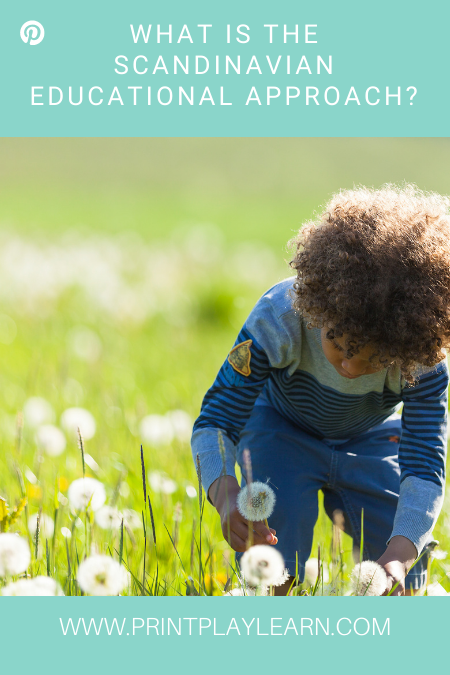What is the Scandinavian Educational Approach?
Scandinavia, an area that covers Denmark, Norway, Sweden (and sometimes Finland and Iceland depending on who you ask) is known for its playful educational approach, distinct from the standardised mainstream approach taken in the UK.
While each country has a different education system, with no specific model used across the whole region, there are key similarities you’ll find across the area. Let’s take a look at what these are:
Play is at the heart
The number one focus of Scandinavian learning? Play! Play is highly valued as a route to self-expression, creativity, imagination and independent learning. With Scandinavians wanting school to be exciting and fun.
While in English there is just one word for play, it’s so important to Scandinavians that in Danish, there are two words to help describe it:
‘Spille’ which means playing in an environment with rules and regulations – such as with a more structured activity.
‘Lege’ (where the word ‘Lego’ comes from) which means play without rules, where creativity thrives.
It is the second style of play which the Scandinavians particularly encourage, allowing a child’s imagination to lead them, and for their games and activities to grow and develop in a direction that suits their needs (strengthening their sense of autonomy).
Formal education starts later
In Scandinavia, children start school at age 6 or 7 (rather than 4-5 in the UK). This provides a stable foundation for the future of their education and is fundamental to the development of cognitive skills, nurtured in a low pressure, age appropriate and play-based environment.
Learning is a conversation
Dictating how an education unfolds is not part of the Scandinavian approach. Instead schools wish for learning to be a conversation taking a holistic approach which takes into account the experiences of child, parent and teacher.
This also means teachers are guided by the national curriculum however they are not bound by it as extensively as teachers are here in the UK.
Conversation between children is also encouraged, with an emphasis on both autonomy and collaboration being part of the Scandinavian way.
They embrace Forest Schools!
In Scandinavia, forest schools are a popular choice for early years learning. Here education is provided by nurturing a child-led and play-based experience outdoors, encouraging a child’s sense of curiosity and wonder.
The benefits of forest schools are huge. From strengthening both gross and fine motor skills, to encouraging more creative play, learning about nature, helping them keep fit and practicing being present with their surroundings – in all weathers.
The focus with forest school is again a holistic approach where educational staff support children where they are at.
Observations over testing
We all know how intimidating tests and exams can be on our kids, and the Scandinavians agree! They take a continual evaluation approach through observations, rather than formal assessments, which means a child’s performance is based on their ongoing knowledge, understanding and ability rather than on their test scores.
The first exams children are likely to come across are not until they’re 16 years old!
Creating life-long learners is the goal
Scandanvians approach education with a long term focus and desire to make learning something that is exciting and fun far beyond school years. They want to create life-long learners who will bring innovation into society.
The ultimate aim is to give children an educational experience which will demonstrate the intrinsic rewards of gaining knowledge and understanding.
How do you feel about this approach to learning? Are there ways you can incorporate more of this style into your classroom or home? Take a look at the Print Play Learn blog for other playful educational approaches to consider.
